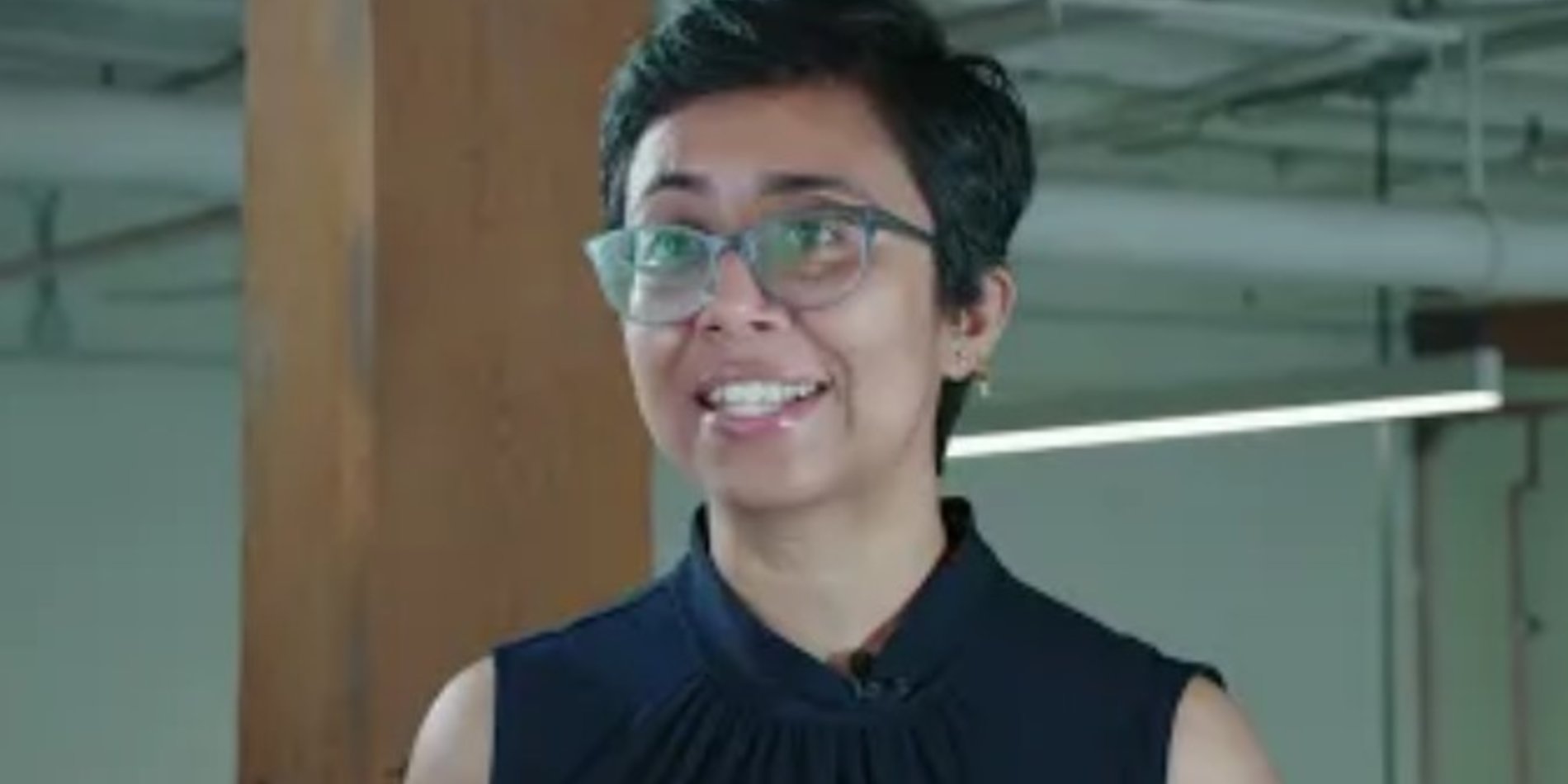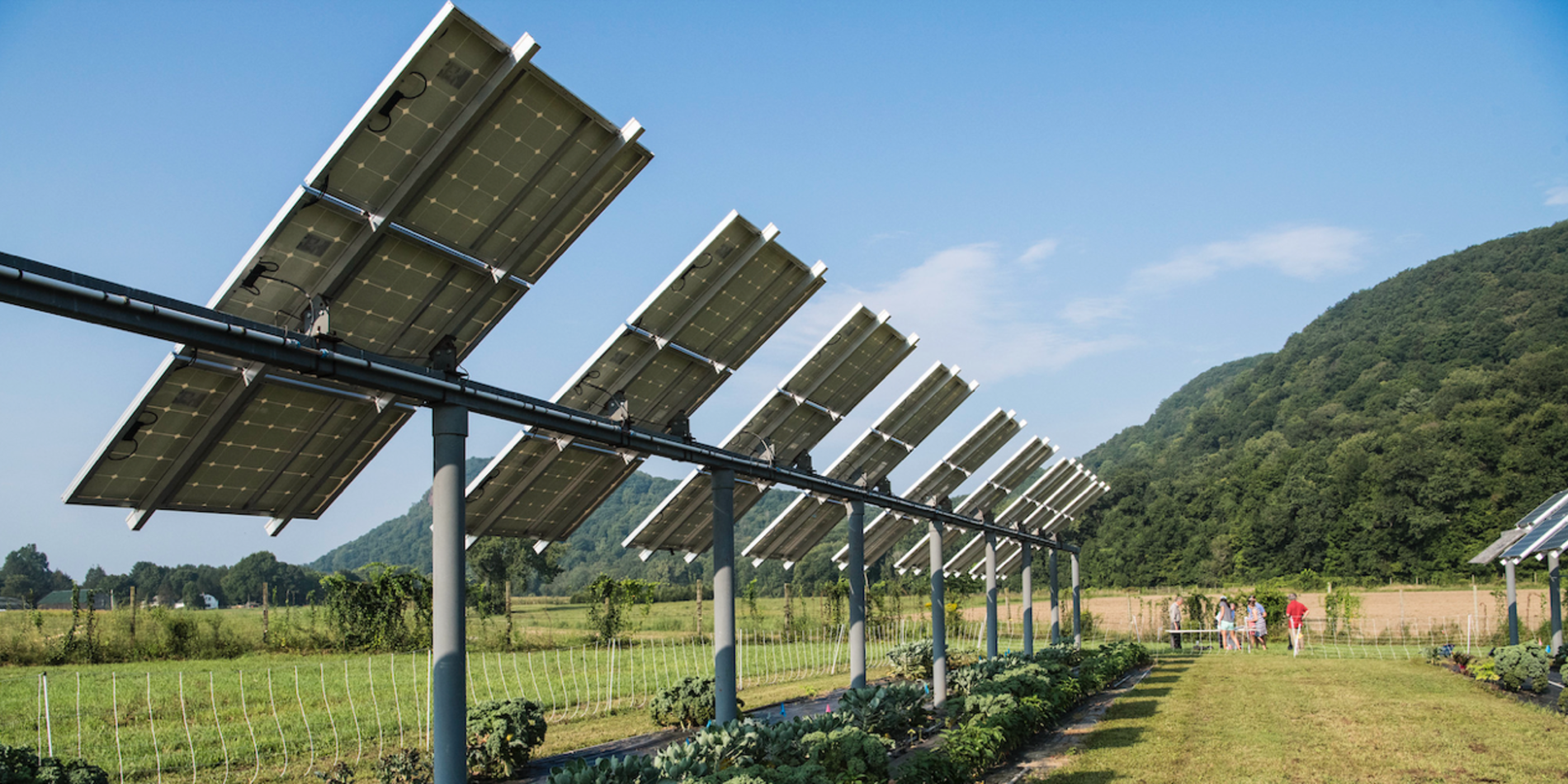Racing to Resilience

Farming has been a risky business since the dawn of agriculture, but in the era of a changing climate, it is even more unpredictable.
“Around half a billion farmers are directly impacted by climate change,” says Himanshu Gupta, MS/MBA ’18 (left), citing information from the U.N. Food and Agriculture Organization. Gupta

is the co-founder and CEO of ClimateAi, a startup that is using machine learning to make food systems more resilient. Together with co-founder and COO Max Evans, MS/MBA ’18 (right), they aim to raise farmers’ profitability and to brace supply chains for disruptions driven by extreme weather.
They liken their services to Bloomberg, the financial media and analyst company, only instead of forecasting stocks and bonds, the venture is predicting climate risks and helping food supply chains adapt to climate change. What’s the likelihood for late-season frost? For summertime drought? For flooding next week—and how could it impact the business metrics that companies care about? The co-founders have spent four years developing an artificial intelligence platform to answer these questions using data science and formulating what concrete actions organizations can take to reduce these risks.
Gupta is quick to point out that ClimateAi doesn’t work directly with farmers.
“It’s hard to build a scalable business that way,” he says candidly. Instead they work with food processors—the potato choppers and tomato canners of the world—who in turn have relationships with growers and directly influence modern-day farming practices.
A changing world
So, how does it work?
Pretend for a moment that you lead production for a food company, sourcing potatoes for restaurants and fast-food giants. You worry about the increasingly sudden swings in weather and how it is affecting the quality of potatoes globally, which in turn affects the company finances.
“You come to our platform and first we help you digitize your supply chain,” explains Gupta, describing how, in this hypothetical scenario, the ClimateAi dashboard would list all of the potato farm vendor locations. “If there is a heat risk within the next three weeks, you’ll get an alert on your phone—and so will your suppliers.”
Next ClimateAi advises on how to react. The guidance could be to ask farmers to harvest a week early to beat the heat, or identify producers elsewhere in the world. Because seed selection and crop rotation are also important factors in growing farm resilience, the venture is providing guidance on these as well.
Unlike simpler weather apps, ClimateAi has data-driven climate insights that look up to a year in the future—as well as longer-term forecasts that peer decades ahead. Forecasting extreme weather like this isn’t easy. Artificial intelligence alone isn’t enough to provide these kinds of insights because the historical data on extreme weather is so limited.
ClimateAi’s breakthrough was to use a hybrid technique to machine learning called physics-driven AI, which is also used by the self-driving car industry and other fields. The AI models are trained using both simulated weather data and actual data from satellites and weather stations, creating a forecasting system that is swifter and more accurate than what was available before.
Already the company has received three patents for this technology, and ClimateAi hopes to make landmark contributions to climate science research as well. In addition, the team is collecting operational data from food company partners that detail how, exactly, climate risks impact the global food system. The more data in the platform, the better the forecasts will be.
Interestingly, the COVID-19 pandemic has served as a warning bell. While the virus is unrelated to climate change, it revealed just how fragile the current food system is around the world, as farmers piled up potatoes into small mountains, slowly spoiling, or distributed them for free by the thousands in parking lots. What was normally a synchronized process from field to fast-food drive-thru, quickly fell apart.
And what happened for potatoes was also happening for wheat, soybeans, rice, teff, strawberries, grapes, and spinach.
“The pandemic has been a test run and it increased urgency among our customers, along with their growers,” says Gupta. “The bigger picture is that climate change is happening, and the supply chains need to adapt to it.”
Roommates to entrepreneurs
For the co-founders, farming is not an abstraction; it is woven into the stories of their childhoods.
Evans is from Ecuador, and the son of a pineapple farmer. He grew up selling pineapple contracts to food companies that he now sells software to as an entrepreneur. After studying applied mathematics at Harvard, Evans focused his graduate work at Stanford on machine learning applications for climate science.
Gupta is from a small village in north India, where he remembers as a young child walking a half-mile with his family to fetch water from the nearest river in case the municipal supply would run out during times of deficit monsoon seasons. That region is still hard-hit by drought and slim margins for farmers struggling for a livelihood.
“That’s how close climate change is to my heart and my home,” he says.
The two became roommates while in their second year at Stanford Graduate School of Business and started an independent project under the supervision of Professor Hau Lee. As it turns out, they were laying the groundwork for ClimateAi.
Early enthusiasm from potential clients gave a glimmer of the commercial possibilities, but Gupta says an Innovation Transfer grant from the TomKat Center for Sustainable Energy is what really launched them. When the center decided to support ClimateAi, he says the signal to Silicon Valley investors was as important as the funds. “TomKat takes big bets and they come through on their promises.”
Today, ClimateAi has grown into a 17-employee startup, with hopes to expand to 50 employees within the next two years. Their clients hail from Europe, North America, South Africa, Israel, and India.
The venture’s core technology focuses on climate risk, which affects many business sectors. Food and agriculture was the natural place to start, the literal low-hanging fruit, but once the technology is proven out, ClimateAi intends to apply the same approach to other sectors, from energy to mining.
Farmers first
Before enrolling at Stanford, Gupta spent a decade in climate change policy, first in India, then in the United Kingdom, and finally in the United States with former vice president Al Gore. The experience taught him the need to act early and not to wait until people are suffering from climate-driven repercussions to respond.
“Government programs that currently exist to aid farmers are disaster management programs, not adaptation programs,” he says.
A tragic example comes from his home country, where farmer suicides are increasingly common when crops fail and farmers cannot repay federal agriculture subsidy loans. He says the Indian government often rolls out debt relief when the suicides begin, yet this doesn’t solve the underlying crisis.
“The only way we can solve this problem is if the private sector sees incentive in investing in adaptation, and then the market can accelerate solutions to the biggest human challenge of this century,” he says.
Because in the end, farmers must thrive for everyone to thrive.



